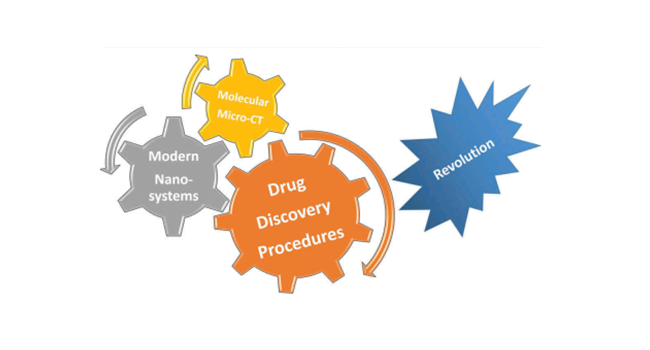Introduction
In the pharmaceutical industry, the process of drug development is very expensive and time-consuming. Typically, the US $1–1.5 billion and several years are estimated to be needed for the development of a new drug before extensive clinical examinations. Such a cost and time only contribute to about a quarter of the total costs and time needed for the entrance of a new drug into the markets. Also, such an investment in early-stage drug discovery determines the quality of the final compound and its success rate in clinical trial phases. It is critical to control and manage the costs per an FDAapproved drug so that the R&D output in the pharmaceutical industry can be optimized. Molecular imaging (MI) techniques are of great assistance to reduce the costs of drug discovery processes. To select a compound for clinical development, its pharmacokinetic and pharmacodynamic properties must be optimized so that the best candidate can be selected. Pharmacokinetics and pharmacodynamics imply what the body does to the drug and what the drug does to the body. These two components are quite critical to be known in the process of drug discovery. It is also essential to precisely determine the actions of a new drug, from the molecular target to the clinical effects. In the area of drug discovery, in vivo MI techniques allow us to address two important and crucial queries [1]: how much drug gets a specific site in the body and [2] what does drug do? To answer these questions, a huge amount of money and time must be consumed if the conventional methods are applied. Recently, an enormous growing body of MI techniques such as Magnetic Resonance Imaging (MRI), Positron Emission Tomography (PET), Single Photon Emission Computed Tomography (SPECT), Computed Tomography (CT), and Optical Imaging modalities has been examined to accelerate the drug discovery process and keep the R&D costs under control. Due to a great deal of capabilities from viewpoints of speed, cost, availability, and efficiency, micro-CT based MI techniques need to receive greater attention. In this opinion, a critical perspective on the importance of molecular micro-CT imaging methods and their impact on early-stage drug discovery process is provided. On the other hand, with the emergence of nanotechnology and its potentials in production of all-in-one theranostic nanoparticles, the impact of CT imaging technique or its related hybrid imaging modalities (such as MR/CT or SPECT/CT) on drug discovery process is being further highlighted. We expect that the integration of molecular micro-CT scan technique and allin-one theranostic nanoparticles can revolutionize the future procedures of drug discovery. In the rest of the current editorial, we separately provide a short introductory overview of molecular micro-CT imaging and all-in-one theranostic nanoparticles. Finally, we discuss our visions in the opinion section.




